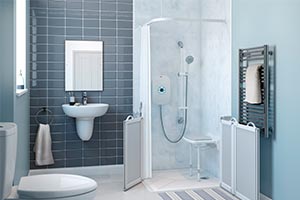Inspirational social care leader Zoë Fry has been awarded the Order of the British Empire (OBE) medal for services rendered to social…
Delivering Well Designed Wheelchair Accessible Bathrooms
In such challenging times in the care sector, anything that can make life easier is a welcome addition. Here, Stuart Reynolds, Head of Product and Marketing at AKW, explains how bringing good design to bear in wheelchair accessible bathrooms makes not only residents, but carers lives that bit easier.
Good wheelchair accessible bathroom design
The following is best practice advice taken from the Building Regulation’s Doc Mi for wheelchair user dwellings and also from Kate Sheehan, Occupational Therapist of The OT Service for a well-designed wheelchair accessible bathroom:
Promote movement around the space
Manoeuvring into and inside the bathroom are key considerations, not only when thinking about the wheelchair user but care assistants. With this in mind:
- Prioritise level access throughout the space – use a wet room former, or a recessed or ramped shower tray
- Ensure doors are outward facing – this increases space and helps in emergencies
- Ensure easy and safe level shower access – use a corner design for the shower space1
- Minimise any gradient near the WC – to reduce wheelchair tipping hazards
- Incorporate a raised height toilet – for easier transfer from wheelchair to toilet
- Ensure toilet accessibility on both sides if possible – this is best-practice advice2, facilitating transfers, personal assistant support and potential changes in need for the wheelchair user
- Ensure that there is no external plumbing and pipe work – to promote ease of movement around the space
- Think about the placement of radiators or towel rails – as they can hinder wheelchair movement
- Use slip-resistant flooring – to maximise the traction of the wheelchair and minimise falls
- Use a wall hung sink – consider one with handles or a concave design
- Think about shower placement – as this will impact movement around the space
- Tailor the placement of grab rails – depending on the bathroom’s layout, fold-up rails may benefit some users and any care assistants
- Use smart technology to promote independence – eg. AKW’s SmartCare Plus remote-controlled shower enables the wheelchair user to control everything with no additional assistance
Finally, good design needn’t be expensive. In fact, the majority of the suggestions in AKW’s latest Wheelchair Accessible Bathroom Design guide are focused on using cost-effective adaptation equipment in ways that make sense to the space and to the wheelchair user.
For more information, please contact AKW on 01905 823298, Email: sales@akw-ltd.co.uk or visit www.akw-ltd.co.uk





